Performance Analysis of Embedded Mechanoluminescence-Perovskite Self-Powered Pressure Sensor for Structural Health Monitoring
Abstract
:1. Introduction
2. Materials and Methods
2.1. Materials and Reagent
2.2. Device Fabrication
2.3. Material and Device Characterization
3. Results and Discussion
3.1. Device Architecture
3.2. Device Characterization and Embedment
3.3. Sensor Response with Applied Pressure and Performance
4. Conclusions
Author Contributions
Funding
Acknowledgments
Conflicts of Interest
References
- Bunsell, A.R.; Renard, J. Fundamentals of Fibre Reinforced Composite Materials, 1st ed.; CRC Press: Boca Raton, FL, USA, 2005; ISBN 978-0-7503-0689-8. [Google Scholar]
- Ou, J.; Li, H. Structural health monitoring in mainland China: Review and future trends. Struct. Health Monit. 2010, 9, 219–231. [Google Scholar] [CrossRef]
- Hsieh, K.H.; Halling, M.W.; Barr, P.J. Overview of vibrational structural health monitoring with representative case studies. J. Bridge Eng. 2006, 11, 707–715. [Google Scholar] [CrossRef]
- Boller, C. Next generation structural health monitoring and its integration into aircraft design. Int. J. Syst. Sci. 2000, 31, 1333–1349. [Google Scholar] [CrossRef]
- Baker, W.; McKenzie, I.; Jones, R. Development of life extension strategies for Australian military aircraft, using structural health monitoring of composite repairs and joints. Compos. Struct. 2004, 66, 133–143. [Google Scholar] [CrossRef]
- Farrar, C.R.; Worden, K. An introduction to structural health monitoring. Philos. Trans. R. Soc. A Math. Phys. Eng. Sci. 2007, 365, 303–315. [Google Scholar] [CrossRef]
- Daerefa-a Mitsheal, A.; Diogo, M.; Opukuro, D.-W.; George, H. A review of structural health monitoring techniques as applied to composite structures. Struct. Durab. Health Monit. 2017, 11, 91–147. [Google Scholar] [CrossRef]
- Shohag, M.A.; Adams, G.R.; Eze, V.O.; Ichite, T.; Carani, L.B.; Okoli, O. Mechanoluminescent-Perovskite pressure sensor for structural health monitoring. In Proceedings of the Structural Health Monitoring, Santa Clara, CA, USA, 10–12 September 2019. [Google Scholar]
- Jeong, S.M.; Song, S.; Seo, H.-J.; Choi, W.M.; Hwang, S.-H.; Lee, S.G.; Lim, S.K. Battery-Free, human-motion-powered light-emitting fabric: Mechanoluminescent textile. Adv. Sustain. Syst. 2017, 1, 1700126. [Google Scholar] [CrossRef]
- Jeong, S.M.; Song, S.; Joo, K.-I.; Kim, J.; Hwang, S.-H.; Jeong, J.; Kim, H. Bright, wind-driven white mechanoluminescence from zinc sulphide microparticles embedded in a polydimethylsiloxane elastomer. Energy Environ. Sci. 2014, 7, 3338–3346. [Google Scholar] [CrossRef] [Green Version]
- Jeong, S.M.; Song, S.; Lee, S.-K.; Ha, N.Y. Color Manipulation of mechanoluminescence from stress-activated composite films. Adv. Mater. 2013, 25, 6194–6200. [Google Scholar] [CrossRef]
- Olawale, D.O.; Sullivan, G.; Dickens, T.; Tsalickis, S.; Okoli, O.I.; Sobanjo, J.O.; Wang, B. Development of a triboluminescence-based sensor system for concrete structures. Struct. Health Monit. 2012, 11, 139–147. [Google Scholar] [CrossRef]
- Moon Jeong, S.; Song, S.; Lee, S.-K.; Choi, B. Mechanically driven light-generator with high durability. Appl. Phys. Lett. 2013, 102, 051110. [Google Scholar] [CrossRef]
- Shohag, M.A.; Josh, K.; Ndebele, T.; Pollard, M.; Tran, S.; Braga Carani, L.; Dickens, T.; Okoli, O. Active sensors for load and damage monitoring in wind turbine blade: A hybrid manufacturing technique. In Proceedings of the 9th European Workshop on Structural Health Monitoring (EWSHM 2018), Manchester, UK, 10–13 July 2018. [Google Scholar]
- Feng, A.; Smet, P.F. A Review of mechanoluminescence in inorganic solids: Compounds, mechanisms, models and applications. Materials 2018, 11, 484. [Google Scholar] [CrossRef] [Green Version]
- Shohag, M.A.S.; Jiang, Z.; Hammel, E.C.; Braga Carani, L.; Olawale, D.O.; Dickens, T.J.; Wang, H.; Okoli, O.I. Development of friction-induced triboluminescent sensor for load monitoring. J. Intell. Mater. Syst. Struct. 2018, 29, 883–895. [Google Scholar] [CrossRef]
- Shohag, M.A.S.; Eze, V.O.; Braga Carani, L.; Okoli, O.I. Fully Integrated Mechanoluminescent Devices with Nanometer-Thick Perovskite Film as Self-Powered Flexible Sensor for Dynamic Pressure Sensing. ACS Appl. Nano Mater. 2020. [Google Scholar] [CrossRef]
- Chandra, B.P.; Chandra, V.K.; Jha, P. Microscopic theory of elastico-mechanoluminescent smart materials. Appl. Phys. Lett. 2014, 104, 031102. [Google Scholar] [CrossRef]
- Timilsina, S.; Kim, J.S.; Kim, J.; Kim, G.-W. Review of state-of-the-art sensor applications using mechanoluminescence microparticles. Int. J. Precis. Eng. Manuf. 2016, 17, 1237–1247. [Google Scholar] [CrossRef]
- Olawale, D.O.; Dickens, T.; Sullivan, W.G.; Okoli, O.I.; Sobanjo, J.O.; Wang, B. Progress in triboluminescence-based smart optical sensor system. J. Lumin. 2011, 131, 1407–1418. [Google Scholar] [CrossRef]
- Saparov, B.; Mitzi, D.B. Organic–inorganic perovskites: Structural versatility for functional materials design. Chem. Rev. 2016, 116, 4558–4596. [Google Scholar] [CrossRef]
- Brenner, T.M.; Egger, D.A.; Kronik, L.; Hodes, G.; Cahen, D. Hybrid organic–Inorganic perovskites: Low-cost semiconductors with intriguing charge-transport properties. Nat. Rev. Mater. 2016, 1, 15007. [Google Scholar] [CrossRef]
- Mitzi, D.B. Synthesis, structure, and properties of organic-inorganic perovskites and related materials. In Progress in Inorganic Chemistry; Karlin, K.D., Ed.; John Wiley & Sons, Inc.: Hoboken, NJ, USA, 2007; pp. 1–121. ISBN 978-0-470-16649-9. [Google Scholar]
- Eze, V.O.; Adams, G.R.; Braga Carani, L.; Simpson, R.J.; Okoli, O.I. Enhanced inorganic cspbibr2 perovskite film for a sensitive and rapid response self-powered photodetector. J. Phys. Chem. C 2020, 124, 20643–20653. [Google Scholar] [CrossRef]
- Adams, G.R.; Eze, V.O.; Carani, L.B.; Pino, A.; Jolowsky, C.; Okoli, O.I. Synergistic effect of the anti-solvent bath method and improved annealing conditions for high-quality triple cation perovskite thin films. RSC Adv. 2020, 10, 18139–18146. [Google Scholar] [CrossRef]
- Weerasinghe, H.C.; Dkhissi, Y.; Scully, A.D.; Caruso, R.A.; Cheng, Y.-B. Encapsulation for improving the lifetime of flexible perovskite solar cells. Nano Energy 2015, 18, 118–125. [Google Scholar] [CrossRef]
- Wong-Stringer, M.; Game, O.S.; Smith, J.A.; Routledge, T.J.; Alqurashy, B.A.; Freestone, B.G.; Parnell, A.J.; Vaenas, N.; Kumar, V.; Alawad, M.O.A.; et al. High-performance multilayer encapsulation for perovskite photovoltaics. Adv. Energy Mater. 2018, 8, 1801234. [Google Scholar] [CrossRef]
- Barbé, J.; Pockett, A.; Stoichkov, V.; Hughes, D.; Lee, H.K.H.; Carnie, M.; Watson, T.; Tsoi, W.C. In situ investigation of perovskite solar cells’ efficiency and stability in a mimic stratospheric environment for high-altitude pseudo-satellites. J. Mater. Chem. C 2020, 8, 1715–1721. [Google Scholar] [CrossRef]
- Eze, V.O.; Seike, Y.; Mori, T. Efficient planar perovskite solar cells using solution-processed amorphous WO x /fullerene C 60 as electron extraction layers. Org. Electron. 2017, 46, 253–262. [Google Scholar] [CrossRef]
- ITO-Coated PET Film. Available online: https://www.thorlabs.com/newgrouppage9.cfm?objectgroup_id=9535 (accessed on 15 December 2020).
- Chen, Y.; Meng, Q.; Zhang, L.; Han, C.; Gao, H.; Zhang, Y.; Yan, H. SnO2-based electron transporting layer materials for perovskite solar cells: A review of recent progress. J. Energy Chem. 2019, 35, 144–167. [Google Scholar] [CrossRef] [Green Version]
- Park, M.; Kim, J.-Y.; Son, H.J.; Lee, C.-H.; Jang, S.S.; Ko, M.J. Low-temperature solution-processed Li-doped SnO2 as an effective electron transporting layer for high-performance flexible and wearable perovskite solar cells. Nano Energy 2016, 26, 208–215. [Google Scholar] [CrossRef]
- Zhang, Z.; Zhang, W.; Jiang, Q.; Wei, Z.; Deng, M.; Chen, D.; Zhu, W.; Zhang, J.; You, H. Toward high-performance electron/hole-transporting-layer-free, self-powered cspbibr2 photodetectors via interfacial engineering. ACS Appl. Mater. Interfaces 2020, 12, 6607–6614. [Google Scholar] [CrossRef]
- Liu, X.; Liu, Z.; Li, J.; Tan, X.; Sun, B.; Fang, H.; Xi, S.; Shi, T.; Tang, Z.; Liao, G. Ultrafast, self-powered and charge-transport-layer-free photodetectors based on high-quality evaporated CsPbBr3 perovskites for applications in optical communication. J. Mater. Chem. C 2020, 8, 3337–3350. [Google Scholar] [CrossRef]
- Ma, Q.; Huang, S.; Wen, X.; Green, M.A.; Ho-Baillie, A.W.Y. Hole transport layer free inorganic Cspbibr2 perovskite solar cell by dual source thermal evaporation. Adv. Energy Mater. 2016, 6, 1502202. [Google Scholar] [CrossRef]
- Lin, S.; Yang, B.; Qiu, X.; Yan, J.; Shi, J.; Yuan, Y.; Tan, W.; Liu, X.; Huang, H.; Gao, Y.; et al. Efficient and stable planar hole-transport-material-free perovskite solar cells using low temperature processed SnO2 as electron transport material. Org. Electron. 2018, 53, 235–241. [Google Scholar] [CrossRef]
- Bhatt, P.; Pandey, K.; Yadav, P.; Tripathi, B.; Kanth P., C.; Pandey, M.K.; Kumar, M. Investigating the charge carrier transport within the hole-transport material free perovskite solar cell processed in ambient air. Sol. Energy Mater. Sol. Cells 2015, 140, 320–327. [Google Scholar] [CrossRef]
- Etgar, L. Hole-transport material-free perovskite-based solar cells. MRS Bull. 2015, 40, 674–680. [Google Scholar] [CrossRef] [Green Version]
- Ulven, C.; Vaidya, U.K.; Hosur, M.V. Effect of projectile shape during ballistic perforation of VARTM carbon/epoxy composite panels. Compos. Struct. 2003, 61, 143–150. [Google Scholar] [CrossRef]
- Hoang, K.; Latouche, C.; Jobic, S. Defect energy levels and persistent luminescence in Cu-doped ZnS. Comput. Mater. Sci. 2019, 163, 63–67. [Google Scholar] [CrossRef] [Green Version]
- Shin, S.W.; Oh, J.P.; Hong, C.W.; Kim, E.M.; Woo, J.J.; Heo, G.-S.; Kim, J.H. Origin of mechanoluminescence from cu-doped zns particles embedded in an elastomer film and its application in flexible electro-mechanoluminescent lighting devices. ACS Appl. Mater. Interfaces 2016, 8, 1098–1103. [Google Scholar] [CrossRef]
- Chandra, V.K.; Chandra, B.P.; Jha, P. Self-recovery of mechanoluminescence in ZnS:Cu and ZnS:Mn phosphors by trapping of drifting charge carriers. Appl. Phys. Lett. 2013, 103, 161113. [Google Scholar] [CrossRef]
- Etgar, L.; Gao, P.; Xue, Z.; Peng, Q.; Chandiran, A.K.; Liu, B.; Nazeeruddin, M.K.; Grätzel, M. Mesoscopic CH3 NH3 PbI3/TiO2 Heterojunction Solar Cells. J. Am. Chem. Soc. 2012, 134, 17396–17399. [Google Scholar] [CrossRef] [Green Version]
- Park, H.-J.; Kim, S.; Lee, J.H.; Kim, H.T.; Seung, W.; Son, Y.; Kim, T.Y.; Khan, U.; Park, N.-M.; Kim, S.-W. Self-powered motion-driven triboelectric electroluminescence textile system. ACS Appl. Mater. Interfaces 2019, 11, 5200–5207. [Google Scholar] [CrossRef]
- Wang, J.; Qian, S.; Yu, J.; Zhang, Q.; Yuan, Z.; Sang, S.; Zhou, X.; Sun, L. Flexible and wearable pdms-based triboelectric nanogenerator for self-powered tactile sensing. Nanomaterials 2019, 9, 1304. [Google Scholar] [CrossRef] [Green Version]
- Wang, X.; Zhang, H.; Yu, R.; Dong, L.; Peng, D.; Zhang, A.; Zhang, Y.; Liu, H.; Pan, C.; Wang, Z.L. Dynamic pressure mapping of personalized handwriting by a flexible sensor matrix based on the mechanoluminescence process. Adv. Mater. 2015, 27, 2324–2331. [Google Scholar] [CrossRef] [PubMed]
- Jang, J.; Kim, H.; Ji, S.; Kim, H.J.; Kang, M.S.; Kim, T.S.; Won, J.; Lee, J.-H.; Cheon, J.; Kang, K.; et al. Mechanoluminescent, air-dielectric mos2 transistors as active-matrix pressure sensors for wide detection ranges from footsteps to cellular motions. Nano Lett. 2020, 20, 66–74. [Google Scholar] [CrossRef] [PubMed]
- Schwartz, G.; Tee, B.C.-K.; Mei, J.; Appleton, A.L.; Kim, D.H.; Wang, H.; Bao, Z. Flexible polymer transistors with high pressure sensitivity for application in electronic skin and health monitoring. Nat. Commun. 2013, 4, 1859. [Google Scholar] [CrossRef]
- Mannsfeld, S.C.B.; Tee, B.C.-K.; Stoltenberg, R.M.; Chen, C.V.H.-H.; Barman, S.; Muir, B.V.O.; Sokolov, A.N.; Reese, C.; Bao, Z. Highly sensitive flexible pressure sensors with microstructured rubber dielectric layers. Nat. Mater. 2010, 9, 859–864. [Google Scholar] [CrossRef]
- Gong, S.; Schwalb, W.; Wang, Y.; Chen, Y.; Tang, Y.; Si, J.; Shirinzadeh, B.; Cheng, W. A wearable and highly sensitive pressure sensor with ultrathin gold nanowires. Nat. Commun. 2014, 5, 3132. [Google Scholar] [CrossRef] [Green Version]
- Pang, C.; Lee, G.-Y.; Kim, T.; Kim, S.M.; Kim, H.N.; Ahn, S.-H.; Suh, K.-Y. A flexible and highly sensitive strain-gauge sensor using reversible interlocking of nanofibres. Nat. Mater. 2012, 11, 795–801. [Google Scholar] [CrossRef]
- Lee, S.; Reuveny, A.; Reeder, J.; Lee, S.; Jin, H.; Liu, Q.; Yokota, T.; Sekitani, T.; Isoyama, T.; Abe, Y.; et al. A transparent bending-insensitive pressure sensor. Nat. Nanotechnol. 2016, 11, 472–478. [Google Scholar] [CrossRef]
- Choong, C.-L.; Shim, M.-B.; Lee, B.-S.; Jeon, S.; Ko, D.-S.; Kang, T.-H.; Bae, J.; Lee, S.H.; Byun, K.-E.; Im, J.; et al. Highly stretchable resistive pressure sensors using a conductive elastomeric composite on a micropyramid array. Adv. Mater. 2014, 26, 3451–3458. [Google Scholar] [CrossRef]
- Pan, L.; Chortos, A.; Yu, G.; Wang, Y.; Isaacson, S.; Allen, R.; Shi, Y.; Dauskardt, R.; Bao, Z. An ultra-sensitive resistive pressure sensor based on hollow-sphere microstructure induced elasticity in conducting polymer film. Nat. Commun. 2014, 5, 3002. [Google Scholar] [CrossRef] [Green Version]
- Yao, H.-B.; Ge, J.; Wang, C.-F.; Wang, X.; Hu, W.; Zheng, Z.-J.; Ni, Y.; Yu, S.-H. A Flexible and highly pressure-sensitive graphene-polyurethane sponge based on fractured microstructure design. Adv. Mater. 2013, 25, 6692–6698. [Google Scholar] [CrossRef]
- Wang, X.; Gu, Y.; Xiong, Z.; Cui, Z.; Zhang, T. Silk-Molded flexible, ultrasensitive, and highly stable electronic skin for monitoring human physiological signals. Adv. Mater. 2014, 26, 1336–1342. [Google Scholar] [CrossRef]

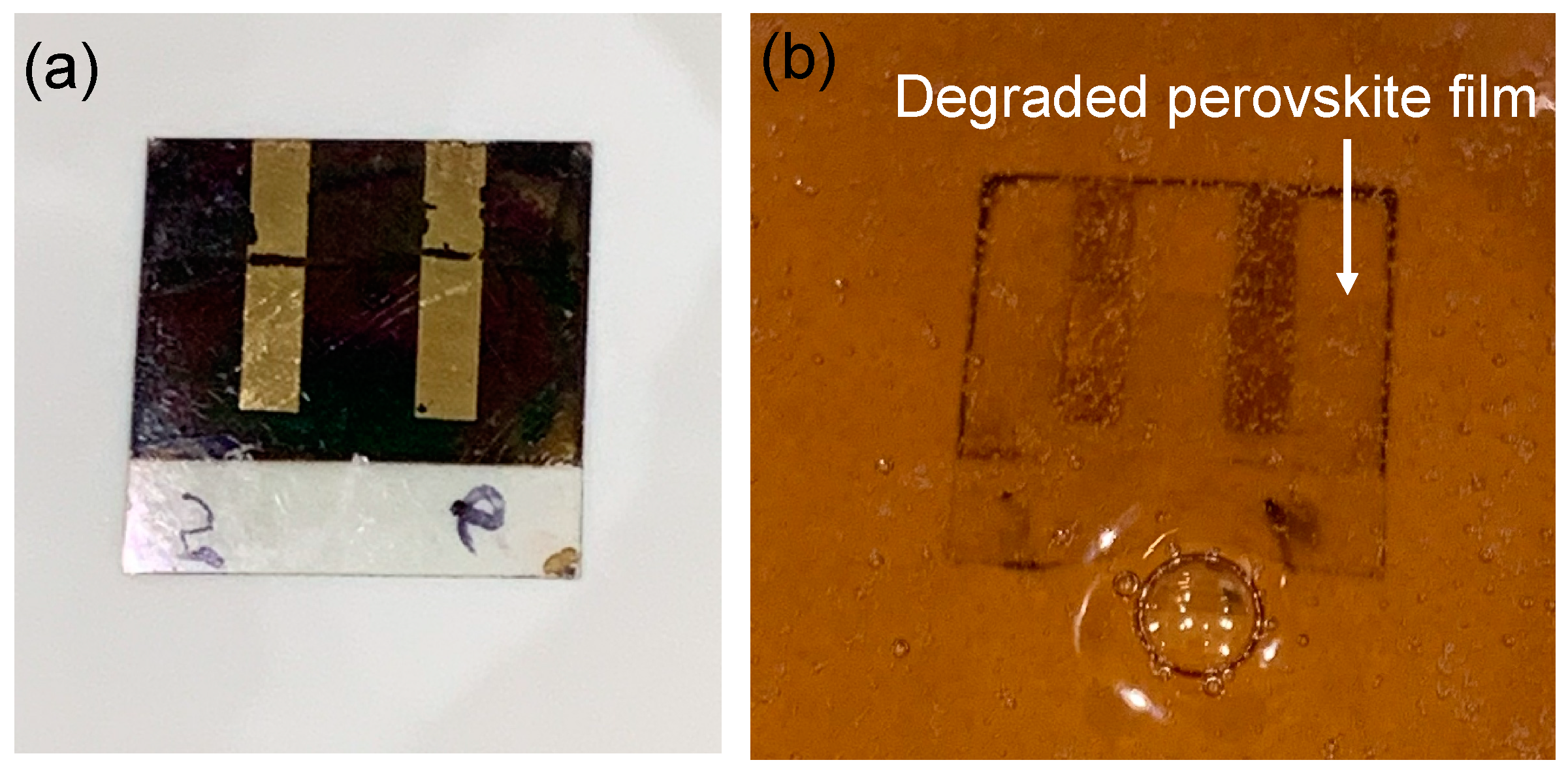


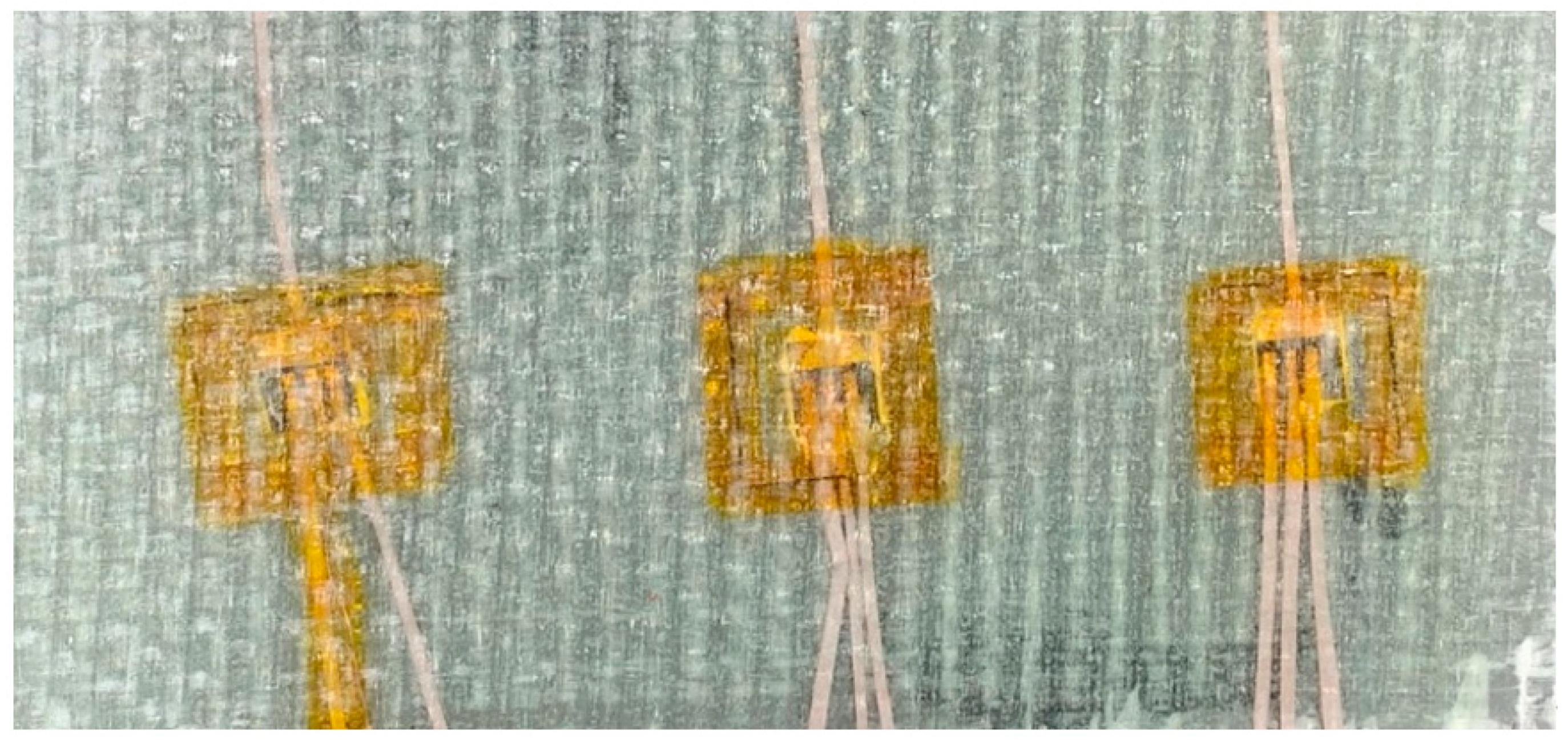
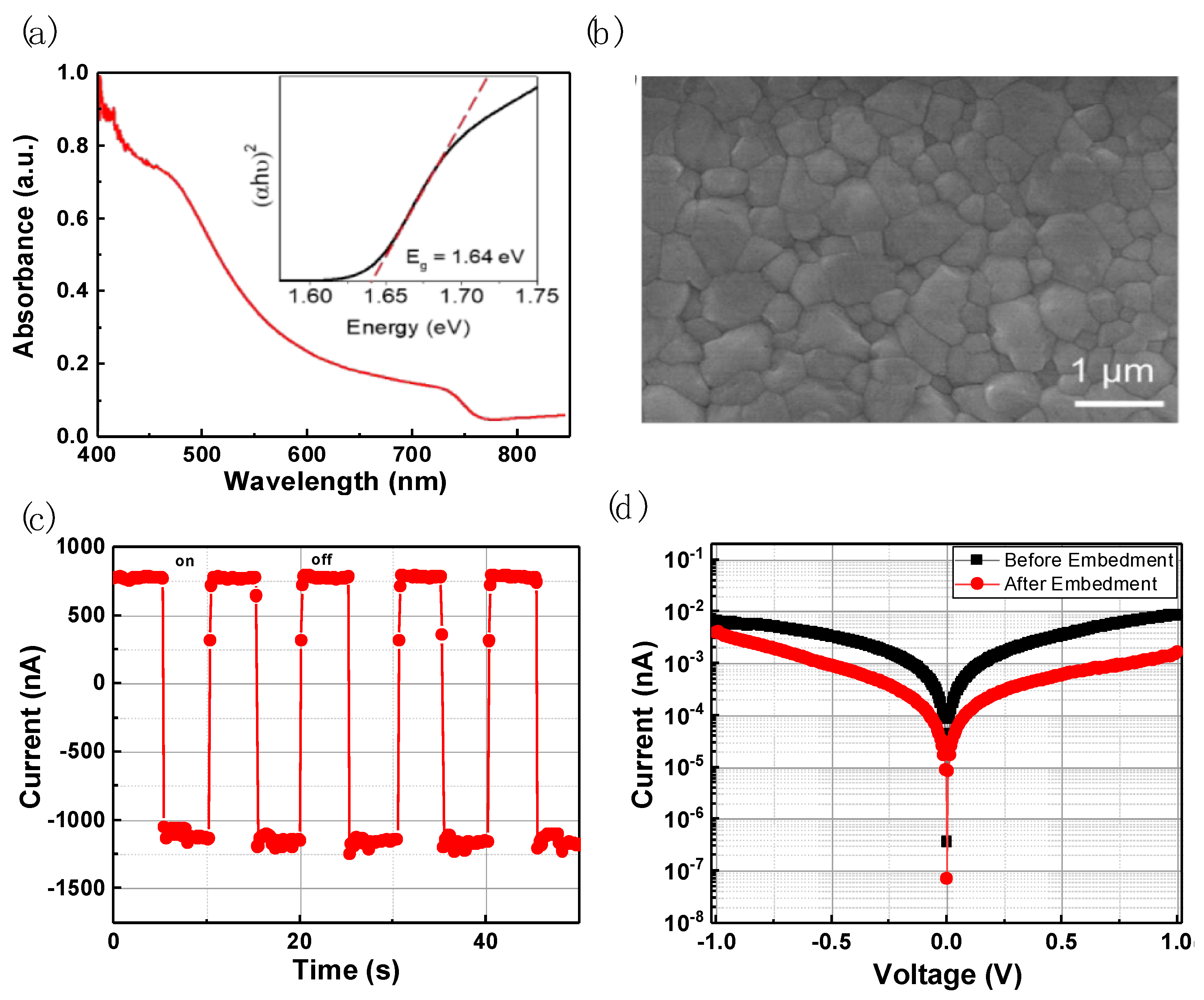
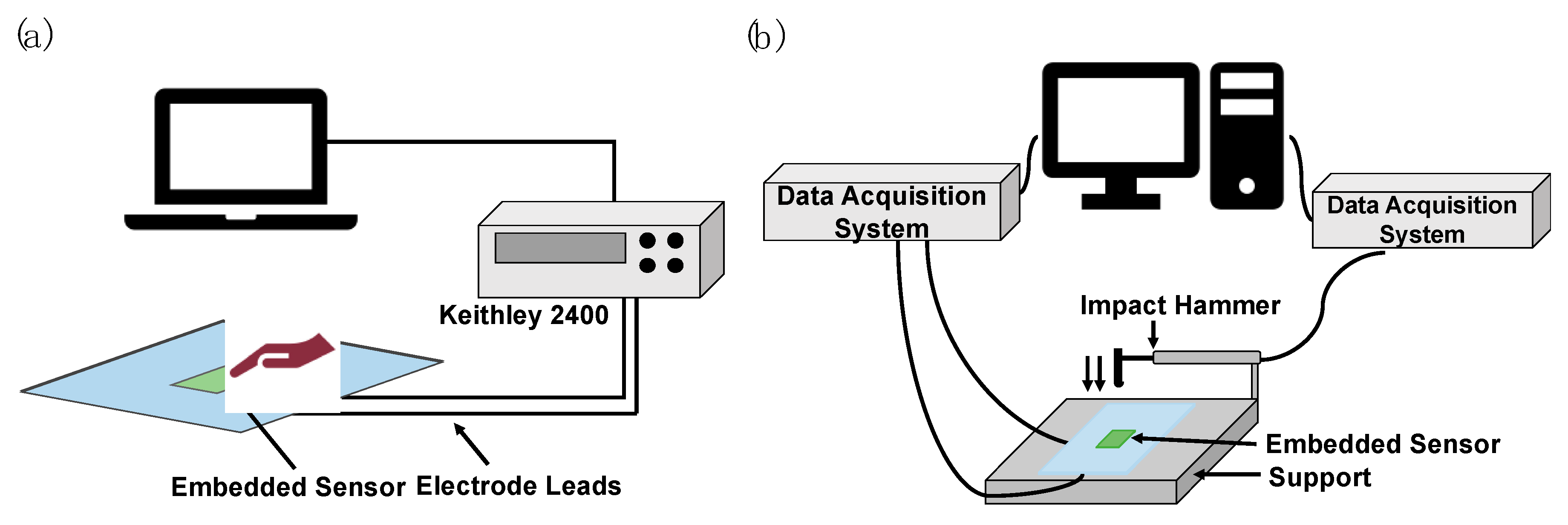
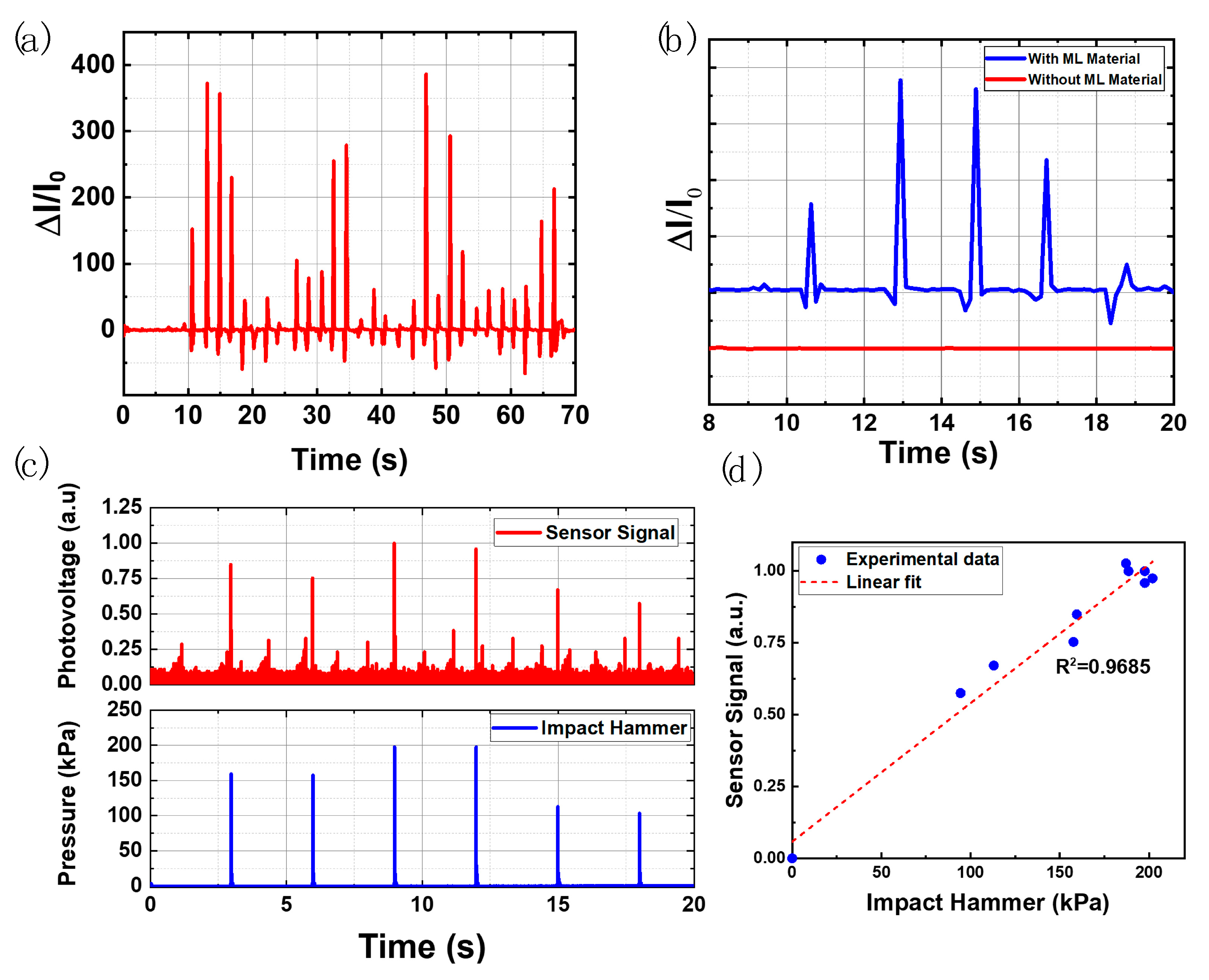
| Sensor Type | Materials | Sensitivity/Min. Pressure | Power Consumption/Operating Voltage | Ref. |
|---|---|---|---|---|
| Mechanoluminescence/Perovskite | ZnS:Cu-PDMS/Perovskite | 0.095 kPa−1 | Self-powered | [17] |
| Mechanoluminescence | ZnS:Mn | 0.7 cps kPa−1 (0.6–10 Mpa) 2.2 cps kPa−1 (10–50 Mpa) | Self-powered | [46] |
| Transistor/Mechanoluminescence | MoS2 FET/PDMS/ZnS:Cu | 1.8 Mpa−1 (<500 kPa) 0.045 Mpa−1 (>500 kPa) | - | [47] |
| Capacitance/Transistor | PDMS | 8.4 kPa−1 | <1 mW | [48] |
| Capacitance | Microstructured PDMS | <10 kPa | 80 V/0.75 mWcm−2 | [49] |
| Resistance | Au Nanowires | >1.14 kPa−1/13 Pa | <30 uW | [50] |
| Resistance | PDMS/Pt-coated polyurethane acrylate/PDMS | 3 Pa | - | [51] |
| Resistance | Nanofibers (carbon nanotubes and graphene) | 1 kPa | - | [52] |
| Piezoresistance | PDMS micro-pyramid array/Pt-coated interlocking nanofibers | 4.88 kPa−1 | 0.2 V | [53] |
| Piezoresistance | Elastic microstructured conducting polymer/Hollow-sphere structures of polypyrrole (Ppy) | 133.1 kPa−1 (p < 30 kPa) 0.4 kPa−1 (p > 1 kPa) | - | [54] |
| Piezoresistance | Graphene-polyurethane sponge | 0.03–0.26 kPa−1 | <1 V/4 mWcm−2 | [55] |
| Piezoresistance | SWNT/PDMS | 1.8 kPa−1 | 2 V/0.007 mWcm−2 | [56] |
Publisher’s Note: MDPI stays neutral with regard to jurisdictional claims in published maps and institutional affiliations. |
© 2020 by the authors. Licensee MDPI, Basel, Switzerland. This article is an open access article distributed under the terms and conditions of the Creative Commons Attribution (CC BY) license (http://creativecommons.org/licenses/by/4.0/).
Share and Cite
Carani, L.B.; Eze, V.O.; Iwuagwu, C.; Okoli, O.I. Performance Analysis of Embedded Mechanoluminescence-Perovskite Self-Powered Pressure Sensor for Structural Health Monitoring. J. Compos. Sci. 2020, 4, 190. https://doi.org/10.3390/jcs4040190
Carani LB, Eze VO, Iwuagwu C, Okoli OI. Performance Analysis of Embedded Mechanoluminescence-Perovskite Self-Powered Pressure Sensor for Structural Health Monitoring. Journal of Composites Science. 2020; 4(4):190. https://doi.org/10.3390/jcs4040190
Chicago/Turabian StyleCarani, Lucas Braga, Vincent Obiozo Eze, Chetanna Iwuagwu, and Okenwa Izeji Okoli. 2020. "Performance Analysis of Embedded Mechanoluminescence-Perovskite Self-Powered Pressure Sensor for Structural Health Monitoring" Journal of Composites Science 4, no. 4: 190. https://doi.org/10.3390/jcs4040190
APA StyleCarani, L. B., Eze, V. O., Iwuagwu, C., & Okoli, O. I. (2020). Performance Analysis of Embedded Mechanoluminescence-Perovskite Self-Powered Pressure Sensor for Structural Health Monitoring. Journal of Composites Science, 4(4), 190. https://doi.org/10.3390/jcs4040190





